BIGGEST BUT NOT THE BADDEST
The last star of this feature is also the biggest of them all. This creature is feared by all of the creatures featured so far in this three-part series. I give you the Bayawak!
I used to despise the Monitor Lizard when I was a child, partly because they looked so big and menacing, but largely because my elders had so many nasty (mostly untrue) stories about them. I guess the Bayawak in barrio folk’s stories are depicted negatively because they used to be an inconvenience to farmers.
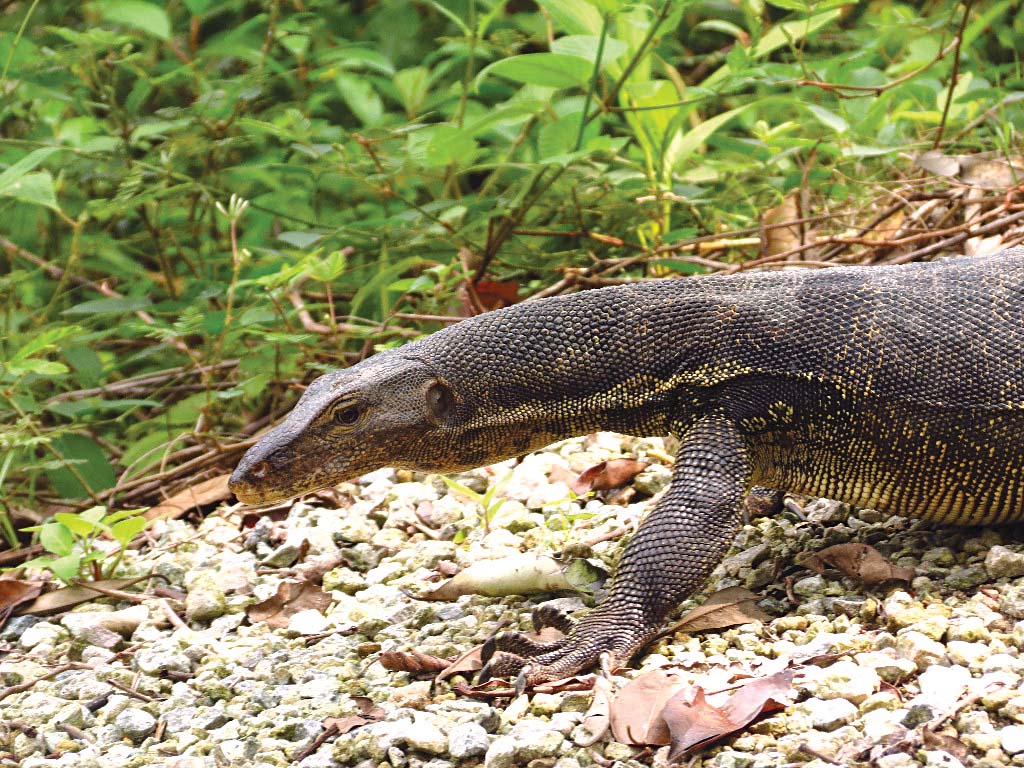
HUNTER AND HUNTED
Monitor Lizards used to be so abundant. There are specimens growing longer than 1.5 meters from head to tail. Big individuals can make daring raids to snatch off Piglets and Kids. (Don’t worry; I am talking about Goat babies, not human babies.)
It is also a good thing that they hunt alone. If ever they learned to hunt in packs, that would be something really suitable for a horror film.
The hunt for Bayawak intensified during the 1980s and 1990s, as air guns became more available and people developed a taste for their flesh. I am glad that Bayawak hunting is now prohibited by law.

BETTER NUMBERS
I personally think that their numbers have rebounded, because I have seen some Monitor Lizards here in the city lately, which is something that I would have deemed impossible a few years ago.
I have spotted different individuals inside our warehouse compound at different periods of time. One actually lived under a stack of wooden pallets for quite a while. I instructed our staff to leave him alone.
A juvenile actually went into my brother’s store and caused panic among the customers. He caught him and gave him to me. I took some pictures of him with my daughter, then we drove to a forested area to release the cute little creature.
A good number of them also “visit” my brother’s house every now and then.
Despite these frequent sightings, I have never seen a specimen growing longer than one meter. The only place where we can see bigger specimens would be at the Palawan Underground River, which is the only
place where Monitor Lizards are effectively protected.
Also, I have never heard of stories about Bayawaks making off with Piglets and Kids these days. Perhaps, these giants only exist in the deepest parts of the forest.
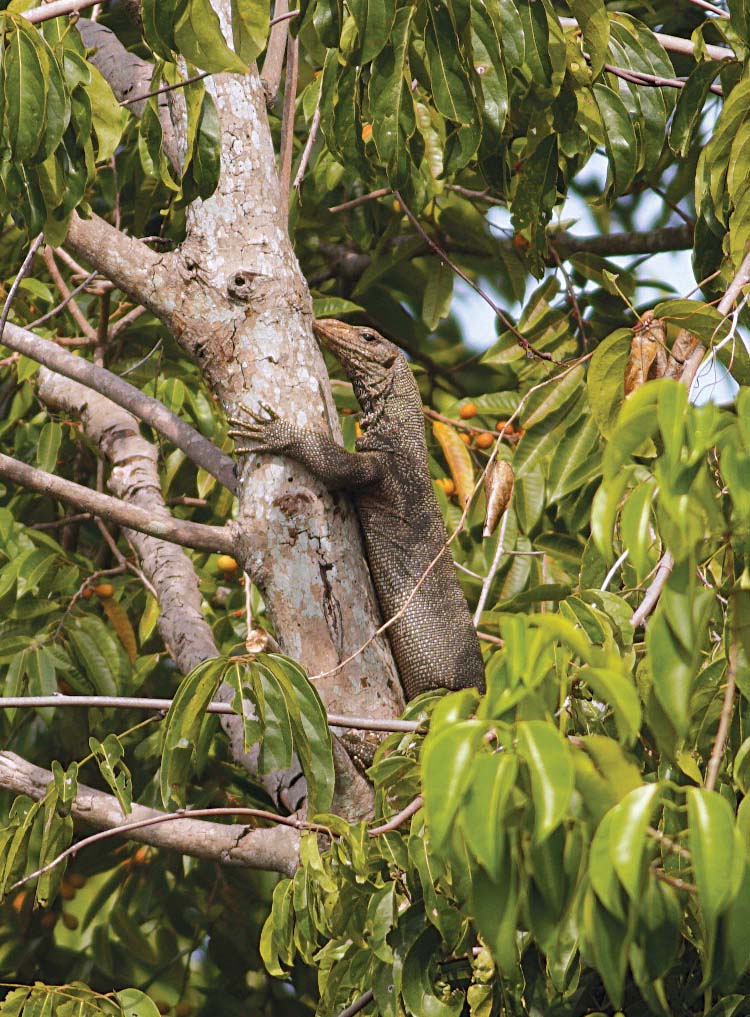
EGG THIEF
Speaking of the visiting Bayawaks, they frequently visit my brother’s house, because he keeps a lot of layers in his backyard (where the Flying Lizard was rescued). The visitors are not big enough to carry off an adult Chicken. But true to the stories of my elders, they do love eggs!
The smell and sight of eggs just make them go crazy. They know they will be chased away, but they still come for the eggs nonetheless. I myself chased the thieving Monitor Lizards many times during my stay with my brother. It happened so many times that I have grown quite accustomed to the Chicken’s call. I would know when there was a Bayawak nearby. In reality, we do not mind them hanging around the house. We think of the Bayawak chase as regular exercise for us.
The most frequent trespassers are juveniles and young adults. As we chased them away, they would vomit out one or two whole eggs, sometimes with the shell still in perfect shape and without cracks. There was this one time when we chased away a 1.2-meter behemoth. That one vomited out four eggs.
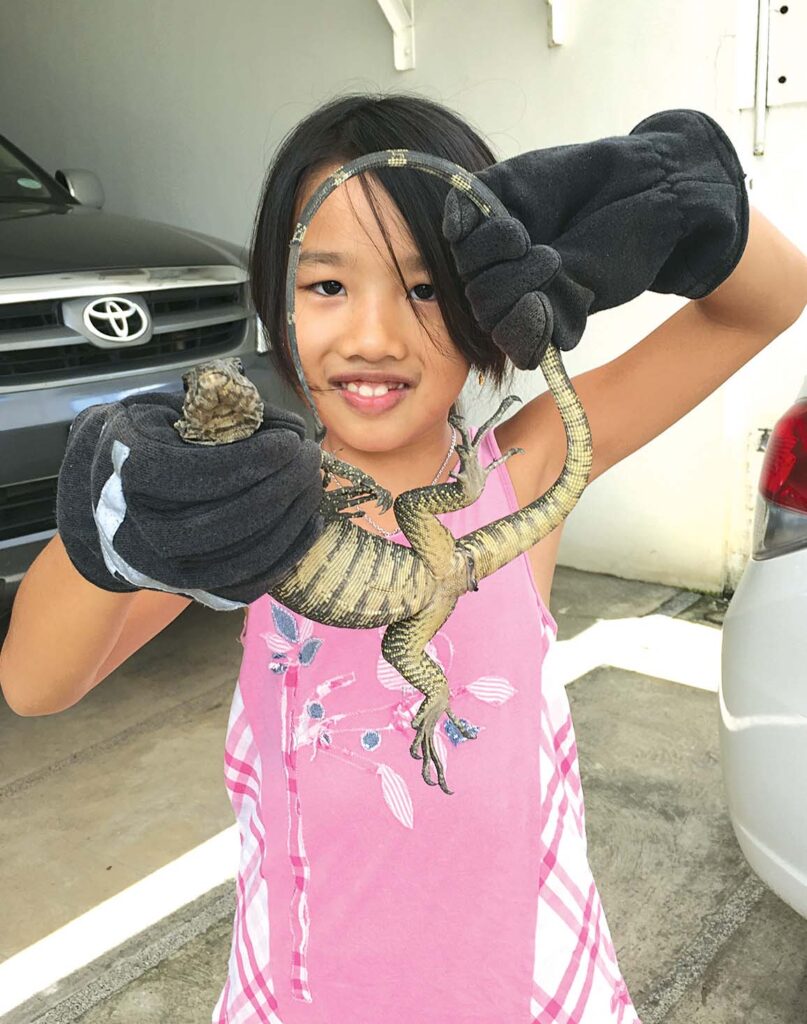
GOOD ACQUAINTANCES
Through my own experience with them in my brother’s house, and also during my visits to the Palawan Underground River (Puerto Princesa Subterranean River National Park), I could fairly say that I have gained a deep understanding of their behavior and psychology.
I was able to hand-feed a really big specimen at the Underground River. This was prior to its famed inclusion into the Seven Natural Wonders of the World, so I could afford more time to interact with them without much interruption.
FAIR WARNING
I would advise everyone not to feed Monitor Lizards at close proximity. Like the Turtle, they cannot distinguish properly which is food and which is hand, and they get startled very easily.
I saw one tourist getting whipped by the Bayawak’s tail, and it really hurt. So, the Bayawak is dangerous at both ends: razor sharp teeth at the front end and whip-like tail at the other.
If that is not dangerous enough, their saliva is chock- full of bacteria, and scientists have reason to suspect that they are also mildly to moderately venomous.
NO EASY CHASE
With all this knowledge of the Bayawak, I was falsely confident that I could easily catch one of those individuals that plagued the Chicken coop, but boy, was I wrong. Apart from having front and rear weaponry, they were extremely quick and agile.
They also had razor sharp claws that I should avoid every time. These claws were not only useful for defense and for hunting, but they also gave the Bayawak the ability to climb trees really fast. I witnessed for quite a lot of times in the barrio that the Bayawak would escape hunters by climbing a tree — even a really smooth, steep, and tall coconut tree.
DIVERSE MENU
Aside from eggs, a Bayawak would eat almost anything in the carnivore menu. Insects, Fishes, Frogs, Snakes, Chicks, Ducklings, Birds, Rats, Lizards — you name it. Even a Hermit Crab would make a tasty snack for them, such as this big specimen who was running around naked in my brother’s front yard.
It is very rare to catch a Hermit Crab out of their shell. This one probably outgrew the last shell and was in the process of scavenging for a new house when we spotted him.
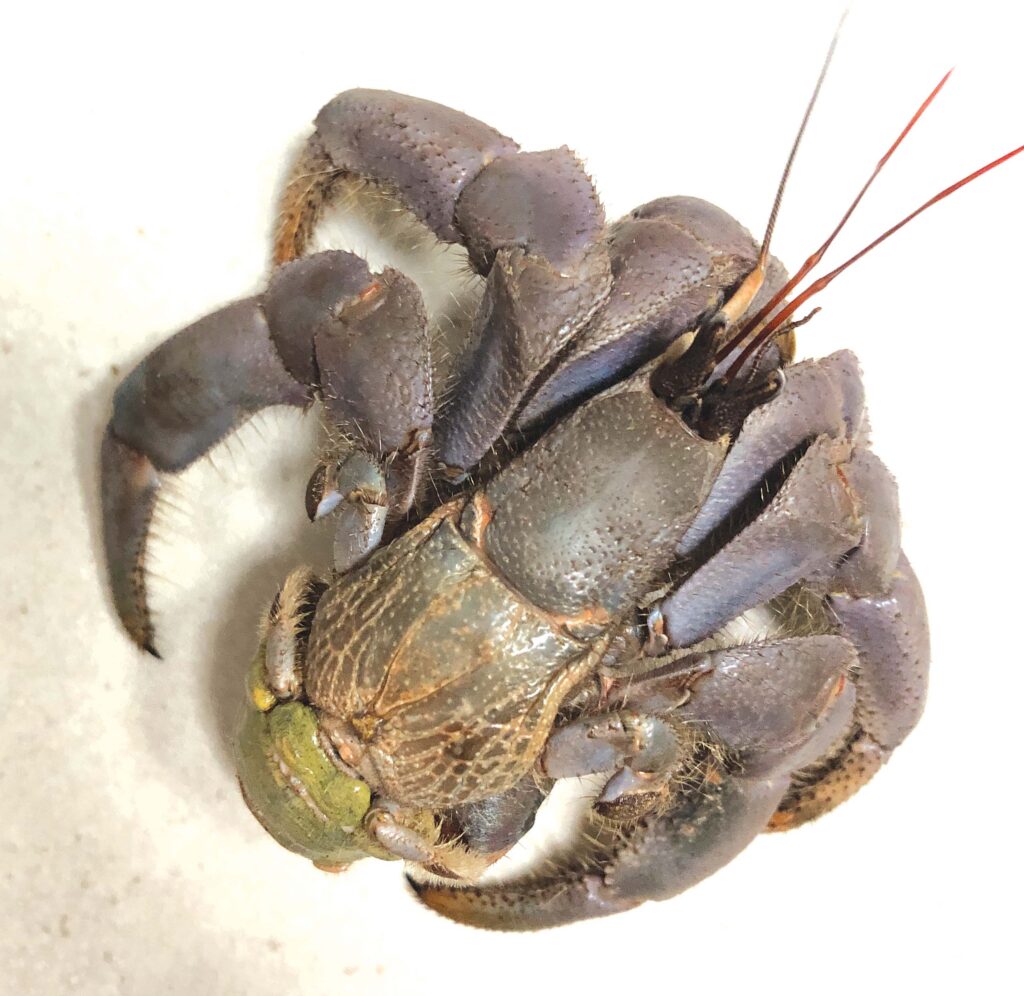
HEAD HONCHO
In the absence of big predators like big cats and bears, and with the crocodile almost extinct in the wild, I would say that the Monitor
Lizard is the new apex predator of the Palawan forests. I am quite amazed by its rebound from decimation during the 1980s and 1990s. With this hardiness and ability to reproduce rapidly, I am seeing some potential for the Bayawak in tourism, among other fields. If only we could see some effort and resources allocated to the in-depth study of the Bayawak!
I am really glad that the majestic Bayawak has clawed its way through, from being over-hunted to having Chicken- pestering numbers. I look forward to the many chases that I will experience with these guys, and I have to thank them for improving my cardiovascular health.
Even with those pincers, a shell-less Hermit Crab would be no match for a hungry Bayawak. As I have said, Bayawak is feared by all, because all of the creatures I have mentioned in this story are fair game for this winner.
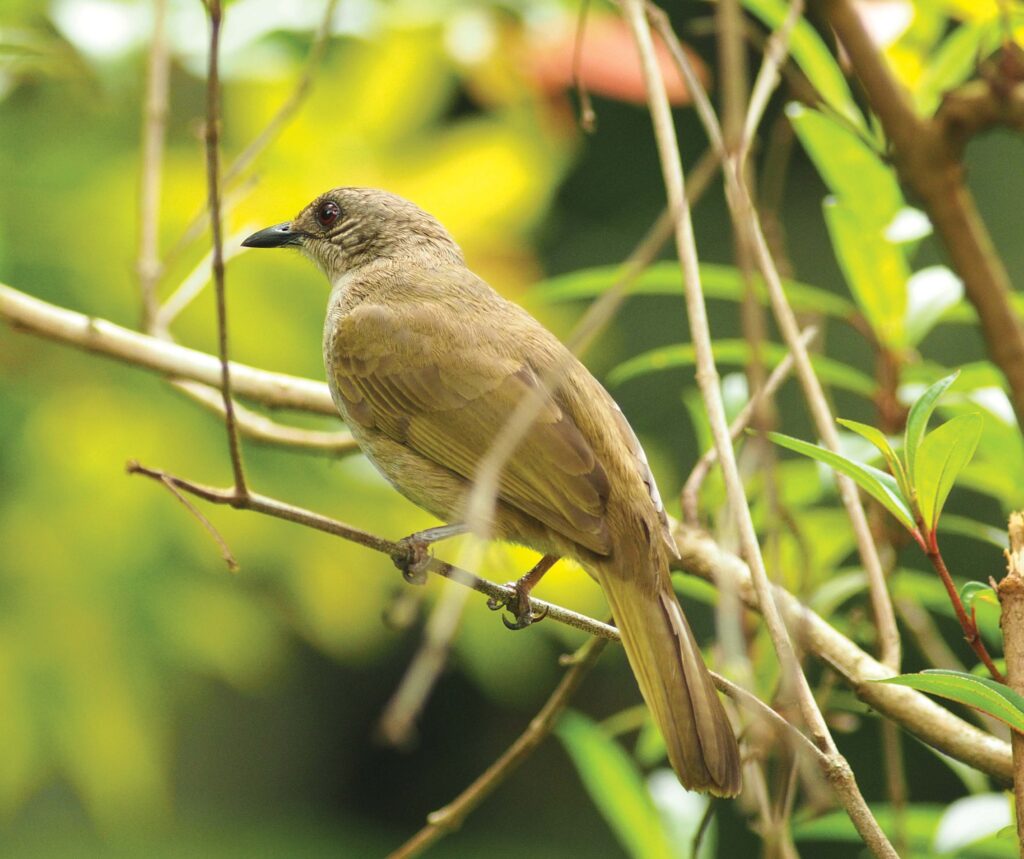
BETTER LEFT ALONE
While my house was being repaired and renovated, my family and I resided in my brother’s house for 11 months. Living in this wooded area away from the hustle and bustle of downtown Puerto Princesa City is a nice change of environment. It also enabled me to meet long-time acquaintances whom I thought no longer existed in the city proper.
The abundance of wildlife in this area was pleasantly surprising. Many of the featured guests here in this three-part series used to be victims of overhunting and habitat destruction, and I was skeptical of their ability to recover. The months of lockdown caused by the pandemic, as well
as effective government protection for animals, has shown me that our wildlife is more resilient than we think.
All they need is restraint from our part.
I know it has been said a thousand times and our ears are already numb to this truth: If only we could stop the indiscriminate conversion of forest land to alienable and farm land, then the future generations would be assured of cohabiting the planet with abundant wildlife.
If not, then they will be able to appreciate wildlife only in videos and still pictures, such as these in the magazine. That is not the kind of future I have in mind for my kids.
Photography by VINCENT LAO and ALVIN LAO


![Palawan encounters: The Resurgence (THREE OF A THREE-PART SERIES) [3/3]](https://files.animalscene.ph/wp-content/uploads/2023/01/shutterstock_1979742788-orange.png)



